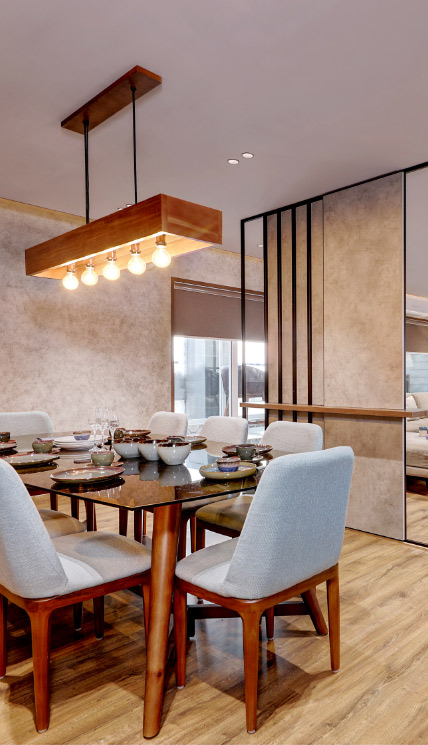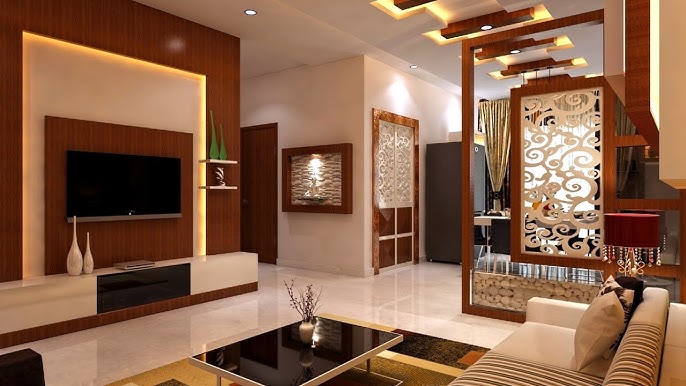Best-rated interior design firms offer innovative solutions.
Best-rated interior design firms offer innovative solutions.
Blog Article
Change Your Home With Important Principles of Interior Decoration and Looks
By comprehending the effect of color concept and the relevance of texture and patterns, one can create rooms that are not only visually enticing however also deeply individual. Accomplishing this equilibrium entails even more than plain design; it incorporates a critical setup and a keen understanding of exactly how each aspect communicates within a space.
Recognizing Color Concept
Color concept is an essential aspect of indoor design that significantly affects mood, assumption, and overall visual. Understanding the concepts of color concept allows developers to create areas that reverberate mentally with owners while satisfying useful demands (luxury interior design). Shades can be classified into 3 key types: key, secondary, and tertiary. Each classification plays an essential function in developing harmony within an area.
The psychological impact of colors is extensive; cozy hues such as reds and oranges evoke energy and heat, while trendy tones like blues and greens promote calmness and harmony. The usage of complementary colors improves visual rate of interest, developing striking contrasts that can boost an area's allure.
Neutral shades, on the various other hand, function as a functional background, permitting other layout aspects to beam. It is vital to consider elements such as lighting and the room's purpose when selecting a shade scheme, as these can modify the assumption of shades throughout the day.
Eventually, a well-considered color scheme can transform a room, cultivating a feeling of convenience and style that aligns with the residents' preferences. Proficiency of shade theory is, for that reason, an important skill for any kind of indoor developer aiming to create unified and welcoming atmospheres.
Achieving Equilibrium in Style
Exactly how can designers accomplish a sense of balance in their spaces? Attaining balance in layout is fundamental to developing harmonious insides.
Asymmetrical equilibrium, on the other hand, depends on differing elements that still achieve a natural look. This technique enables even more vibrant and casual plans, providing rate of interest while maintaining balance. By thoroughly choosing varying sizes, colors, and textures, developers can create a visually compelling room that really feels balanced yet energetic.
Radial balance stresses a central prime focus with elements emitting external. This style is commonly seen in round formats, where furnishings and decoration create a cohesive border that attracts the eye inward.
Eventually, attaining equilibrium requires thoughtful consideration of scale, proportion, and the partnerships in between components. luxury interior design. By skillfully applying these balance principles, designers can transform areas right into settings that really feel both cosmetically pleasing and functionally unified, boosting the total experience for occupants
Importance of Spatial Awareness

A keen sense of spatial awareness enables designers to determine centerpieces within a space, leading the visitor's focus to key features while maintaining an overall feeling of unity. It also aids in the calculated placement of lights, which can considerably affect the understanding of space and mood. Recognizing spatial partnerships makes it possible for the developer to cater to the specific demands of citizens, making sure that each area serves its desired function without jeopardizing visual appeals.
Ultimately, spatial recognition is vital for making best use of the capacity of any indoor area. By thoroughly considering the interaction between measurements, design, and function, developers can produce settings that not only meet functional requirements yet likewise stimulate a sense of convenience and appeal, enhancing the total living experience.
Integrating Appearance and Patterns
Accepting a varied series navigate to these guys of appearances and patterns can substantially enhance the aesthetic and responsive charm of an indoor area. The critical use of numerous materials-- such as timber, steel, material, and rock-- produces deepness and interest, making a space really feel much more welcoming and dynamic. Incorporating smooth surfaces with rough appearances can establish a balance that attracts the eye and engages the senses.
When integrating patterns, consider both scale and repetition. Large patterns can serve as centerpieces, while smaller sized, subtle styles can match various other elements without overwhelming the area. Layering patterns, such as pairing flower paddings with candy striped throws, adds complexity and a feeling of consistency if implemented thoughtfully.
It is also essential to maintain a cohesive shade scheme, ensuring that appearances and patterns collaborate as opposed to contend check over here for attention. By selecting a couple of crucial structures and patterns, you can produce a combined aesthetic that mirrors your individual style while enhancing the total setting of the space. Eventually, the careful unification of these aspects can transform a mundane room into a sophisticated setting abundant with personality and heat.
Individualizing Your Space
Producing an area that reflects your character is crucial to accomplishing a genuinely inviting setting. Customization in interior layout allows you to infuse your one-of-a-kind design and interests right into your home, transforming it from a plain sanctuary into a shelter that speaks with that you are. Begin by choosing a shade combination that reverberates with your emotions-- vibrant colors can energize, while soft tones use serenity.
Include artwork and style that reflect your interests, whether it be travel, nature, or abstract ideas. Displaying individual collections, such as publications, photos, or keepsakes, can evoke treasured memories and develop centerpieces within an area. Additionally, take into consideration customizing practical items, like upholstered furniture, to line up with your visual preferences.

Conclusion
Finally, the transformation of a home with the crucial principles of interior style and aesthetics requires a detailed understanding of shade concept, balance, spatial understanding, structure, and customization. Each component adds considerably to producing an unified and practical living setting - Architecture Firm. By attentively incorporating these concepts, people can boost the aesthetic allure and psychological vibration of their rooms, inevitably cultivating a home that mirrors unique identities while providing comfort and practicality
Report this page